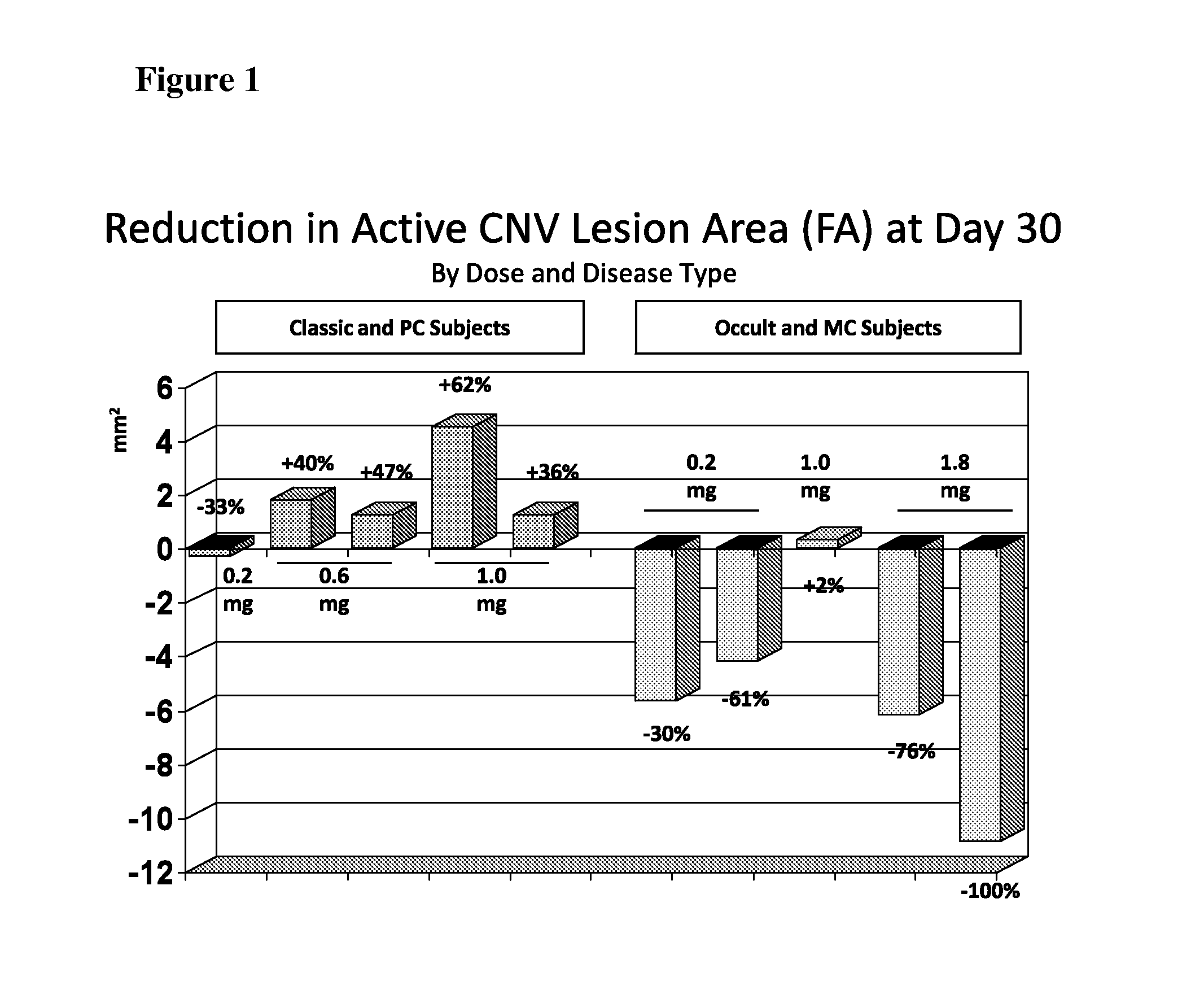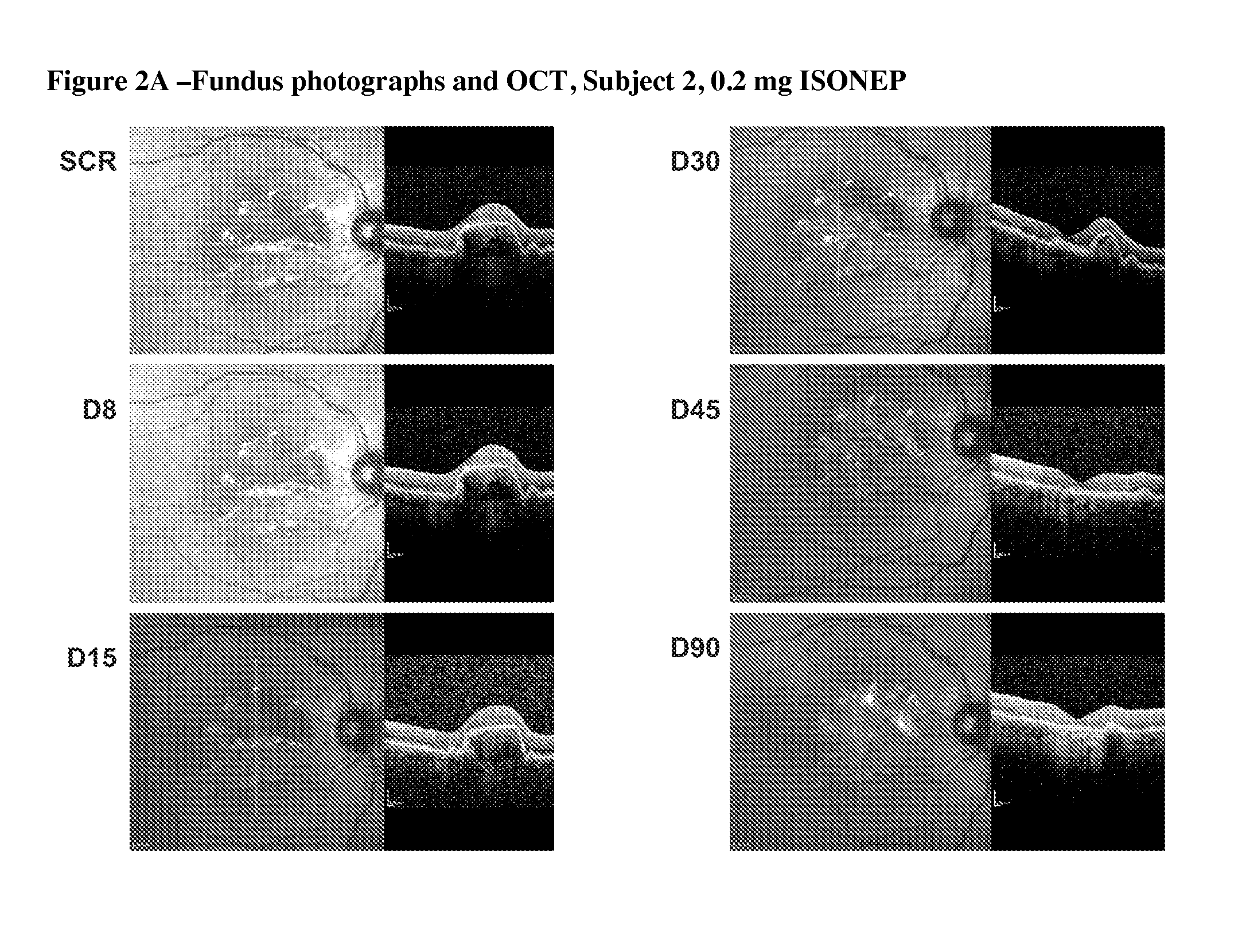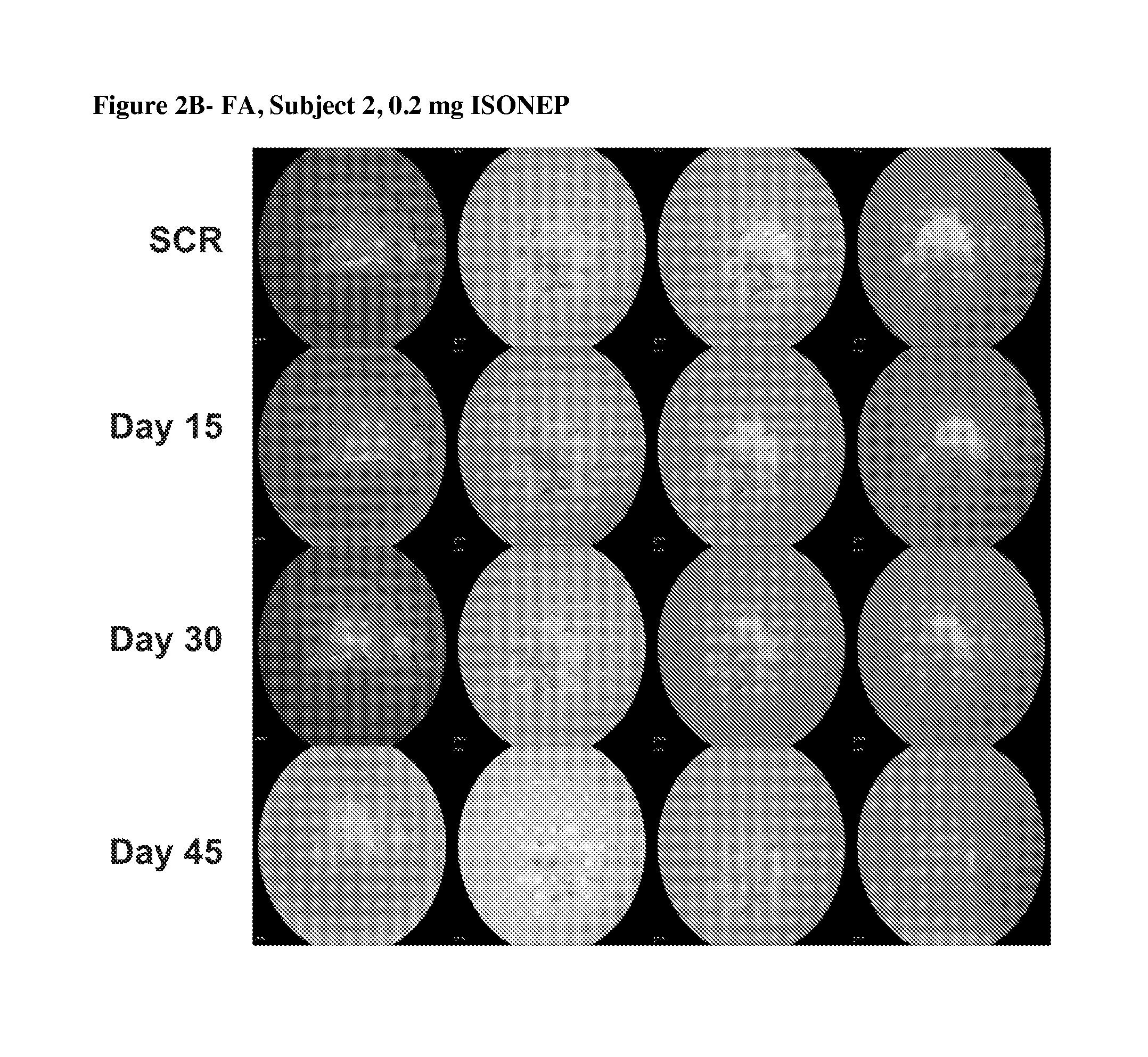Anti-s1p antibody treatment of patients with ocular disease
a technology for ocular disease and anti-s1p antibody, which is applied in the field of ocular disease treatment methods, can solve the problems of insufficient treatment options, complex search for effective treatments, and insufficient treatment options for scar formation and inflammation, so as to reduce the size of choroidal neovascularization lesion, reduce or resolve retinal pigment epithelial detachment, and reduce the thickness of the retina
- Summary
- Abstract
- Description
- Claims
- Application Information
AI Technical Summary
Benefits of technology
Problems solved by technology
Method used
Image
Examples
example 1
Phase I Clinical Trial of Anti-S1P mAb (iSONEP) in Patients with Exudative AMD
[0066]Subjects with all sub-types of CNV secondary to AMD were enrolled in a Prospective Open-Label Dose-Escalating Multi-Center Phase I clinical trial to evaluate the safety, maximum tolerated dose (MTD) and preliminary activity of iSONEP in subjects with exudative AMD.
[0067]The primary objectives of the trial were safety, tolerability and establishment of MTD and dose-limiting toxicity (DLT). The secondary objectives were to characterize pharmacokinetics (PK), evaluate immunogenicity, investigate signs of biologic activity [CNV lesion area by fluorescein angiography (FA) and retinal thickness by optical coherence tomography (OCT) using the STRATUS imaging device and software (Zeiss). OCT is a non-invasive, non-contact method giving a cross sectional image of the living retina and its substructures in real time]. Visual acuity was also evaluated, measured as best corrected visual acuity using the Early Tr...
example 2
Safety Results of Phase I Trial
[0089]ISONEP was found to be well tolerated at all doses. No dose-limiting toxicity (DLT) was observed at any dose and the MTD was not reached. No significant adverse effects related to ISONEP were observed. Five adverse effects were potentially related to ISONEP: one occurrence of conjunctival hemorrhage, two instances of eye pain, and a 3 ms increase in QTcB interval and bundle branch block (observations on ECG) in the same subject, who had been treated with ISONEP at 0.2 mg and had a prior history of arrhythmia. All adverse effects resolved without sequelae. Thus iSONEP met its primary endpoint of being well tolerated in all 15 patients at dose-levels ranging from 0.2 mg. to 1.8 mg. per intravitreal injection (three patients per dose level). No drug-related serious adverse events were reported in any of the patients.
[0090]Interestingly, preliminary indications of biologic activity were seen in this Phase I trial. Five of the fifteen subjects on stud...
example 3
Reduction in Active CNV Lesion Area After Single Treatment
[0091]CNV lesion area was determined by fluorescence angiography (FA), with reading of images performed at the Digital Angiography Reading Center (DARC), New York, N.Y., a fully digital reading center for FA images. Each image was evaluated by two readers.
[0092]A regression in CNV was observed after treatment with ISONEP. CNV is the underlying cause of the disease that eventually leads to degeneration of the macula, the area of the retina responsible for central vision. Of ten patients, three experienced a reduction in lesion area exceeding 5 mm2 and two experienced a reduction of greater than 75%—all after a single dose of ISONEP. This type of clinical benefit is not typical, as the published data [Heier J S et al. (2006) Ophthalmology 113:642e1-642e4] suggest that, even with repeated Lucentis dosing, the total physical size of CNV lesion(s) does not show much reduction. Lucentis and Avastin target the protein VEGF, a valida...
PUM
| Property | Measurement | Unit |
|---|---|---|
| Fraction | aaaaa | aaaaa |
| Fraction | aaaaa | aaaaa |
| Molar density | aaaaa | aaaaa |
Abstract
Description
Claims
Application Information
 Login to View More
Login to View More - R&D
- Intellectual Property
- Life Sciences
- Materials
- Tech Scout
- Unparalleled Data Quality
- Higher Quality Content
- 60% Fewer Hallucinations
Browse by: Latest US Patents, China's latest patents, Technical Efficacy Thesaurus, Application Domain, Technology Topic, Popular Technical Reports.
© 2025 PatSnap. All rights reserved.Legal|Privacy policy|Modern Slavery Act Transparency Statement|Sitemap|About US| Contact US: help@patsnap.com



